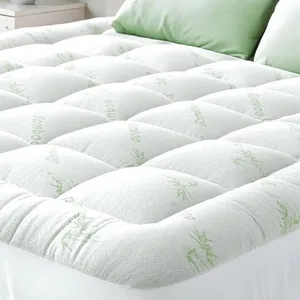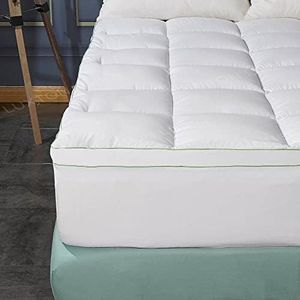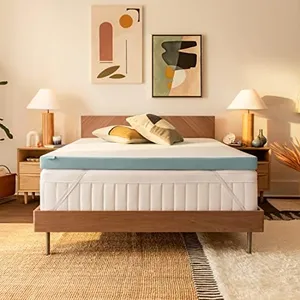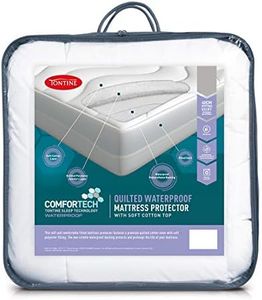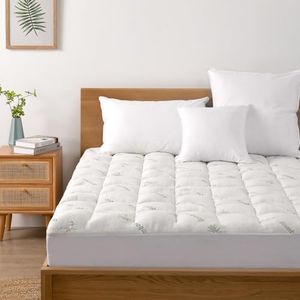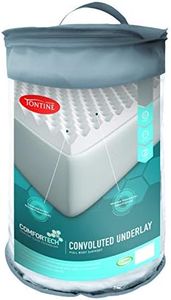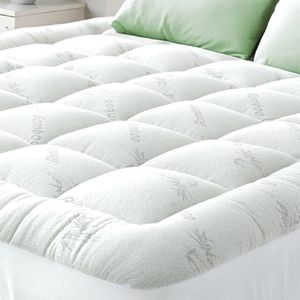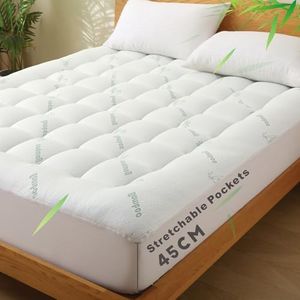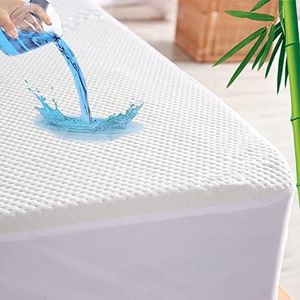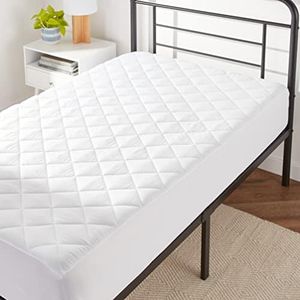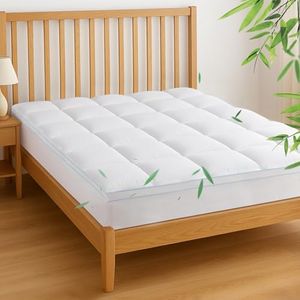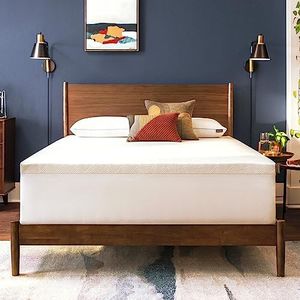We Use CookiesWe use cookies to enhance the security, performance,
functionality and for analytical and promotional activities. By continuing to browse this site you
are agreeing to our privacy policy
10 Best Mattress Pads
From leading brands and best sellers available on the web.By clicking on a link to a third party's website, log data is shared with that third party.
Buying Guide for the Best Mattress Pads
Choosing the right mattress pad can make a big difference in your sleep quality, by adding comfort, temperature regulation, and even protection to your current mattress. When looking for a mattress pad, it's important to first think about what you want to achieve—whether it’s making your bed softer, keeping things cool or warm, guarding against spills, or helping with allergies. By understanding the key specifications, you’ll be better able to pick a mattress pad that fits your lifestyle and sleeping preferences.MaterialThe material of a mattress pad refers to what it’s made of, such as cotton, memory foam, polyester, or bamboo. This is important because it affects comfort, breathability, and durability. Cotton usually feels soft and airy, good for those who want a natural, light layer. Memory foam offers extra cushioning but can feel warmer, so it’s best for people wanting more support. Polyester and bamboo pads can provide moisture-wicking or hypoallergenic features. To choose the best one for you, consider what feels best for your skin, if you have allergies, and whether you tend to sleep hot or cold.
ThicknessThickness tells you how much extra cushioning the mattress pad adds to your bed, usually measured in inches. Thinner pads (around 1 inch or less) add a light layer without changing the feel of your mattress much, which is good if you just want protection. Medium-thick pads (1 to 2 inches) soften your mattress a bit and increase comfort. Thicker pads (over 2 inches) can make a firm mattress feel much softer. If your main goal is comfort or you have a very firm bed, go for thicker pads, but if you just need a little extra or are worried about the pad being too bulky, thinner ones are better.
Fit and SizeFit and size refer to making sure the mattress pad matches the size of your mattress (twin, full, queen, king, etc.) and how it stays in place. Some pads come with deep pockets, fitted sheets, or straps to help them stay put. It’s important because if the pad is too small, it won’t cover the mattress properly, but if it’s too loose, it may bunch up or slip. Look for a pad that fits your mattress size and depth (especially if you have a thick mattress or use a mattress topper) so it doesn't shift during the night.
Temperature ControlTemperature control is all about how the mattress pad affects heat—either keeping you warm or cool at night. Some pads are made with cooling gels, moisture-wicking materials, or breathable fabric to help hot sleepers stay comfortable. Others have insulated or heated options for those who get cold easily. If you’re a warm sleeper, look for terms like cooling, moisture-wicking, or breathable. If you get chilly, look for thermal or heated pads. Picking the right type for your sleep temperature can make your nights much more comfortable.
Protection FeaturesProtection features include things like waterproof layers, hypoallergenic materials, or dust mite barriers designed to protect your mattress from spills, stains, allergens, or pests. This is especially important if you have allergies, young kids, pets, or want to extend the life of your mattress. Waterproof or allergen-resistant pads work well for those with allergies or for homes with a risk of spills. Choose these features according to your household's needs to keep your sleeping space clean and protected.
WashabilityWashability refers to how easy it is to clean the mattress pad, which can make a big difference in maintenance. Some pads are machine-washable, while others need spot cleaning or dry cleaning. If you want something quick and simple to care for, machine-washable pads are best, especially in homes with kids, pets, or allergies. Always check if your machine can handle the pad's size and follow care instructions to keep it in good shape.

